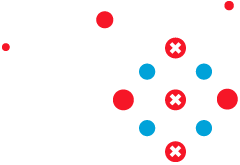Abstract #3497 - Multiple syndemic psychosocial factors are associated with reduced engagement in HIV care among a multinational, online sample of HIV-infected MSM in Latin America
Authors:
Presenting Author:
Dr. Matthew Mimiaga - Harvard UniversityAdditional Authors
Dr Katie Biello, Dr Catherine E Oldenburg, Dr Joshua Rosenberger, Dr David Novak, Dr Kenneth H Mayer, Dr Steven SafrenAim:
Latin America has some of the highest levels of antiretroviral therapy (ART) coverage of any developing region in the world. Early initiation and optimal adherence to ART are necessary for both improved health outcomes and reduction of onward transmission to sexual partners. Previous work has demonstrated the role of psychosocial problems as barriers to uptake and adherence to ART, particularly among men who have sex with men (MSM), and recently, a syndemic framework has been applied to the role of multiple psychosocial syndemic factors and adherence to antiretroviral therapy in the United States. However, to our knowledge, these associations have not been investigated outside of United States, nor in a multi-country context. To address these gaps, we assessed the association between multiple co-occurring psychosocial factors and engagement in HIV-related medical care and adherence to ART among a large, multinational sample of sexually-active HIV-infected MSM in Latin America. Among the 2,020 respondents, 80.7% reported currently receiving HIV-related medical care, 72.3% reported currently receiving ART, and, among those who reported currently receiving ART, 62.5% reported 100% adherence. Compared with experiencing no psychosocial health problems, experiencing 5 or more psychosocial health problems is associated with 42% lower odds of currently receiving HIV-related medical care (aOR=0.58, 95% CI 0.36, 0.95) and of currently receiving ART (aOR=0.58, 95% CI 0.38, 0.91). Moreover, the number of psychosocial health problems experienced was associated with self-reported ART adherence in a dose-response relationship individuals with one syndemic factor had 23% lower odds of reporting being 100% adherent to ART compared to those with none of the factors (aOR=0.77, 95% CI 0.60, 0.97), and individuals with 5 or more syndemic factors had 72% lower odds of reporting being 100% adherent to ART compared to those with none of the factors (aOR=0.28, 95% CI 0.14, 0.55). Although ART coverage in Latin America is generally high, addressing co-occurring psychosocial problems as potential barriers to uptake and adherence of ART may improve the effectiveness of secondary prevention interventions.Go Back

